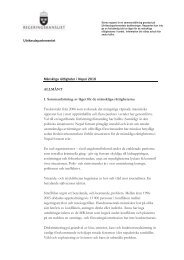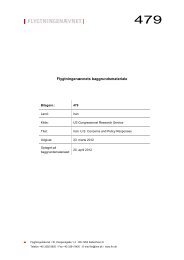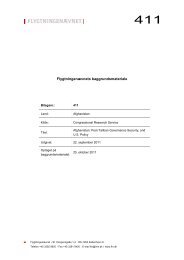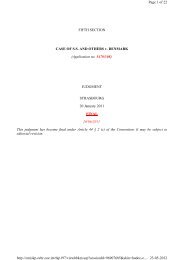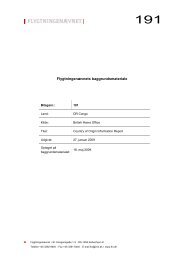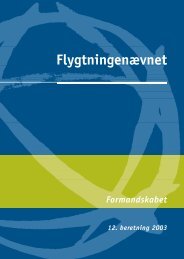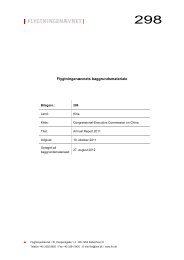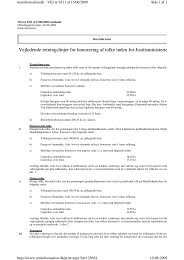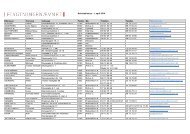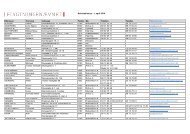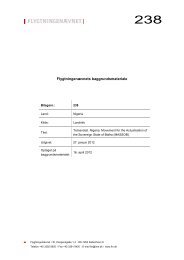Annual Report - National Human Rights Commission
Annual Report - National Human Rights Commission
Annual Report - National Human Rights Commission
You also want an ePaper? Increase the reach of your titles
YUMPU automatically turns print PDFs into web optimized ePapers that Google loves.
Annexure 8<br />
○ ○ ○ ○ ○ ○ ○ ○ ○ ○ ○ ○ ○ ○ ○ ○ ○ ○ ○ ○ ○ ○ ○ ○ ○ ○ ○ ○ ○ ○ ○ ○ ○ ○ ○ ○ ○ ○ ○ ○ ○ ○ ○ ○ ○ ○ ○ ○ ○ ○ ○ ○ ○ ○ ○ ○ ○ ○ ○ ○ ○<br />
○<br />
and other paramedical staff serve by rotation in difficult areas. During such service in<br />
difficult areas a special package of measures including financial incentives to support<br />
such doctors should be adopted. These two steps are critical to address the problem of<br />
lack of doctors in difficult rural areas.<br />
9. States should have a state drug policy and/or adopt a state drug action plan which<br />
ensures that the states formulate an essential drug list and all the drugs on this list are<br />
available at all public health facilities without interruption, and that the prescription<br />
and use of irrational, expensive drugs and the use of hazardous and banned drugs is<br />
curbed in both the private and public sector. This would also need to specify better<br />
drug information to both the patient and the prescribers.<br />
10. The state should adopt a time bound action plan/road map by which the critical gaps<br />
in the provision of good quality emergency obstetric services, sterilisation services,<br />
safe abortion services, and basic surgical emergency services (burns , accidents) can be<br />
provided in a network of referral centers such that there is at least one such centre per<br />
every 100000 population. This action plan should be a detailed publicly stated<br />
commitment and should have an year by year milestone, so that even if the entire plan<br />
would take ten years to implement, the monitoring committees and the public would<br />
know whether each year, that year’s goals are being achieved.<br />
11. The most immediate measure for closing specialist gaps in the referral center would be<br />
transferring of surgeons and gynaecologists and anaesthetists so that this norm for the<br />
provision of emergency and referral level care is met in as many facilities as possible. In<br />
the absence of a transfer policy well-qualified specialists languish in peripheral centers<br />
losing their skills while key facilities, which needs their services, go without them.<br />
12. The governments may publicly notify what are the services it would be providing at<br />
the level of the habitation, at the level of subcenters, at the level of PHCs, CHCs and<br />
district hospitals along with quality indicators. This should be accompanied by similarly<br />
graded standard treatment protocols. This is essential for public knowledge and for<br />
monitoring. This will also help prevent unreasonable expectations from the public – for<br />
certain services may be available only at the district or block level and not at every<br />
PHC as may be expected. But this needs to be publicly notified.<br />
13. The governments should set up a medical services regulatory authority- analogous to<br />
the telecom regulatory authority- which sanctions what constitutes ethical practice and<br />
sets and monitors quality standards and prices of services – both in the public and even<br />
more importantly in the private sector.<br />
14. A Public Health and Health Services Act that defines the rights of food security, safe<br />
<strong>National</strong> <strong>Human</strong> <strong>Rights</strong> <strong>Commission</strong> <strong>Annual</strong> <strong>Report</strong> - 2004-2005<br />
251<br />
AR-Chapter-1-19-10-6-06.p65<br />
271<br />
7/17/06, 6:31 PM



